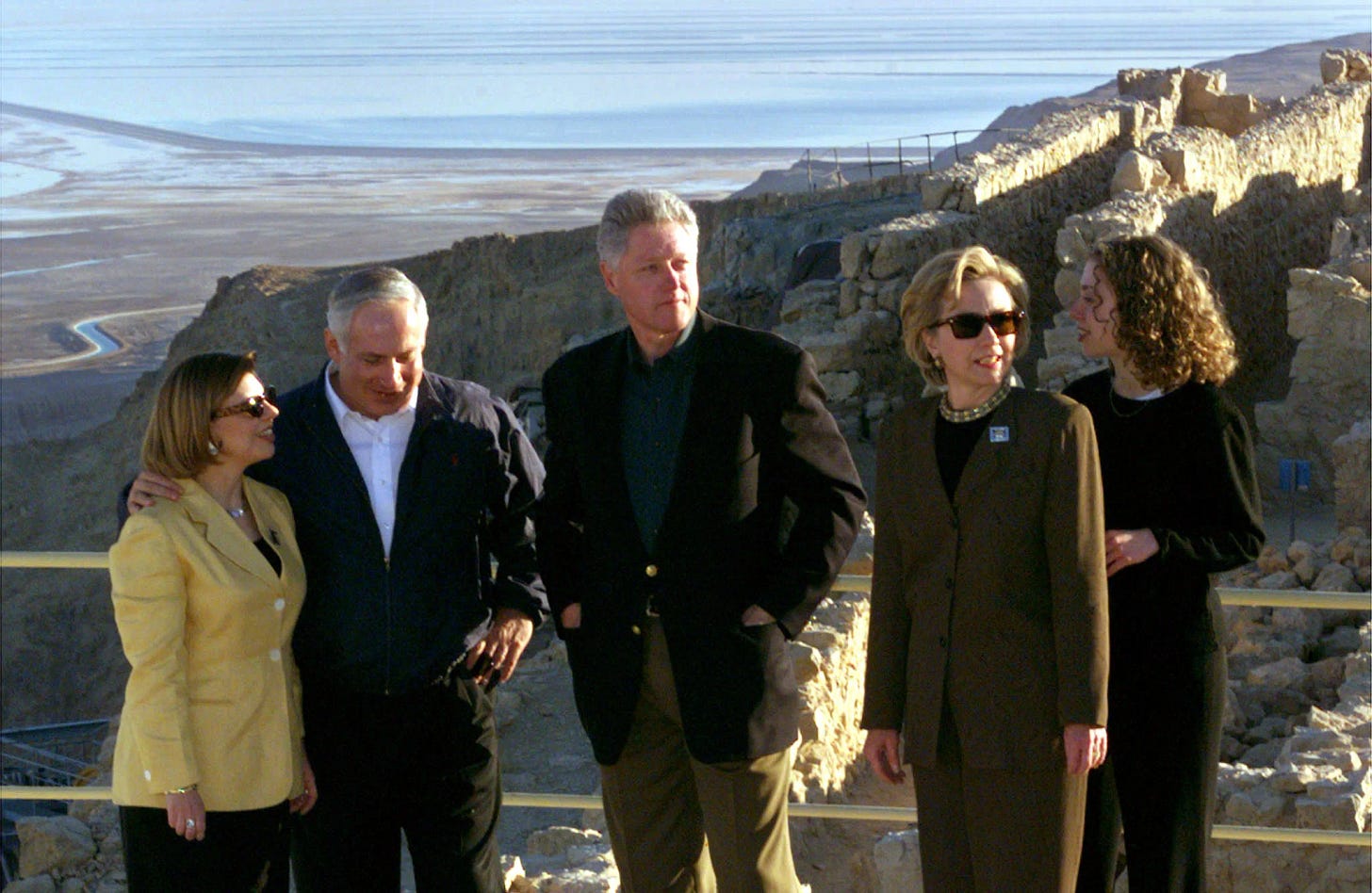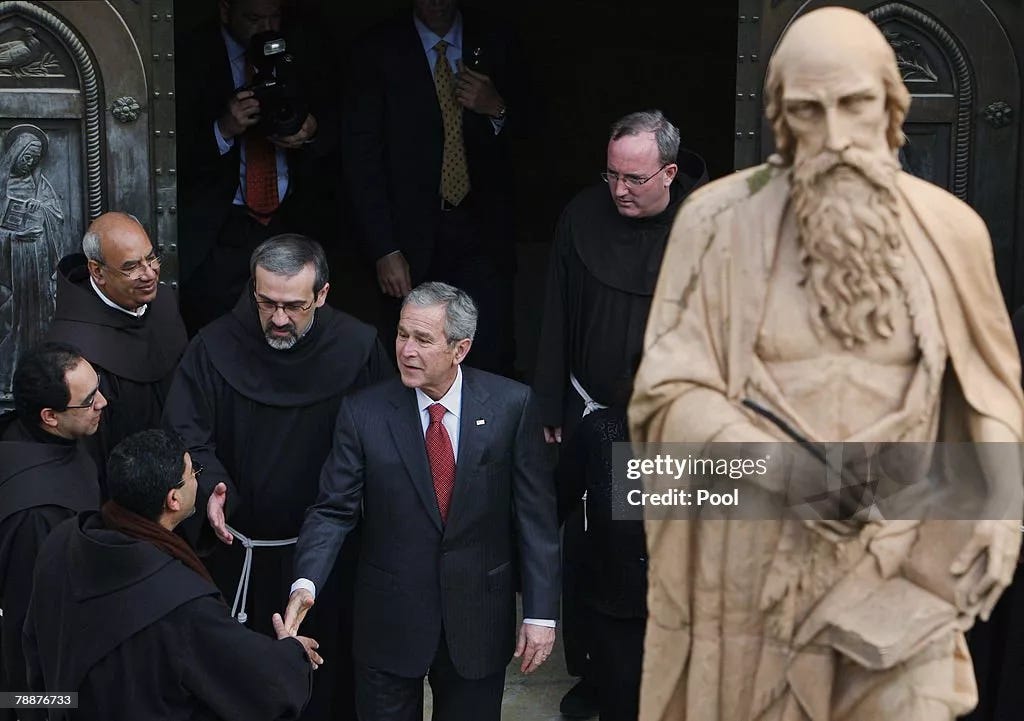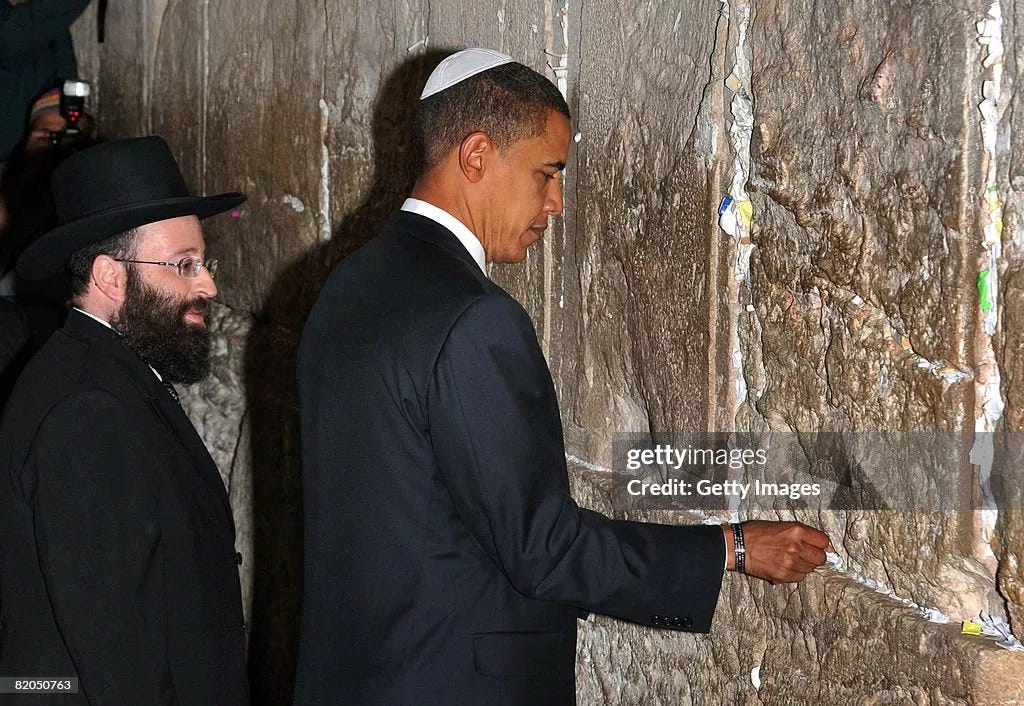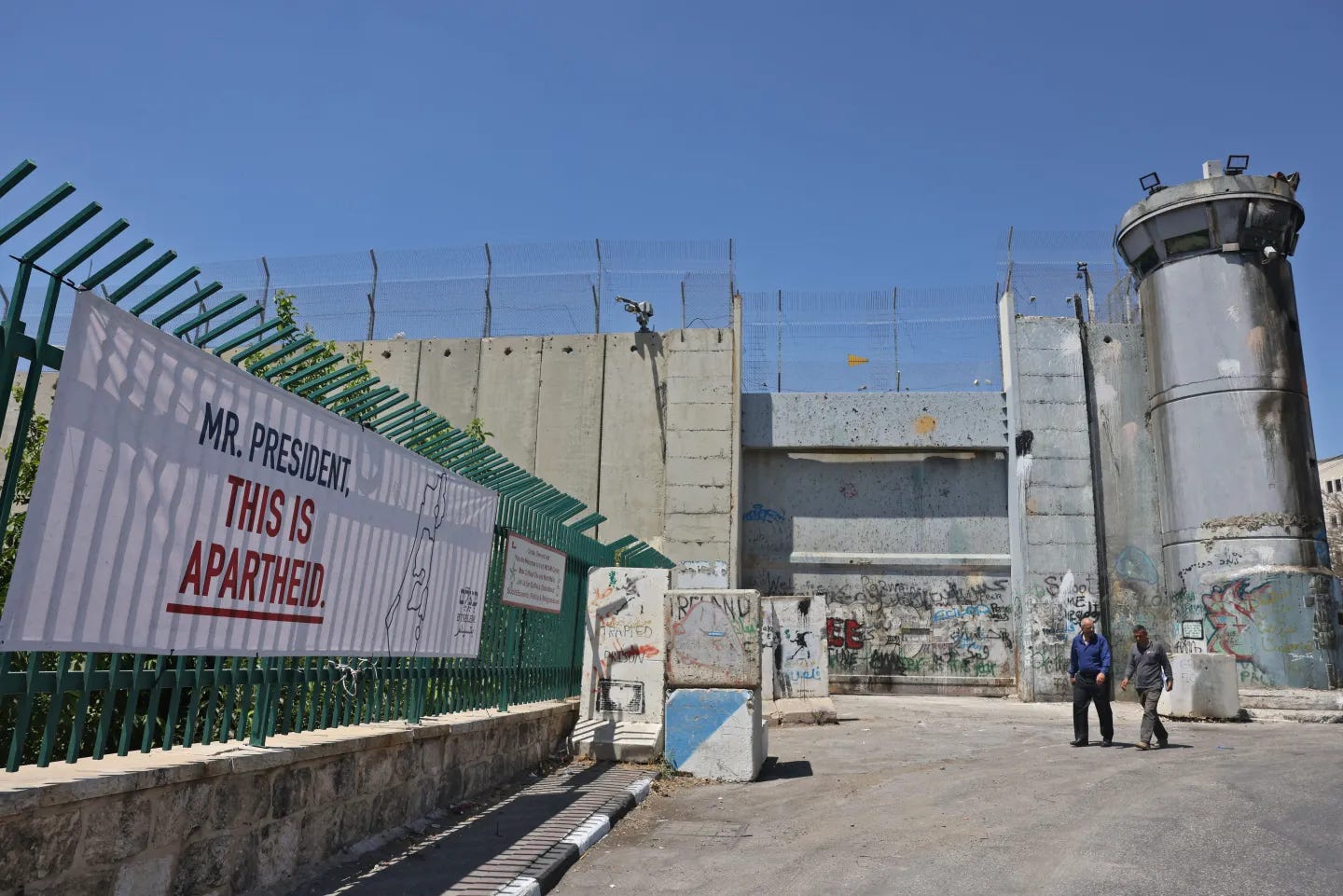As the White House braces for a change in leadership with the upcoming U.S. presidential election, a familiar pattern emerges: the real contest is once again confined to the emblematic donkey and elephant—symbols of the Democratic and Republican parties, respectively. While new names populate the ballot, it is clear to all observers that no serious contender lies outside the duopoly.
Global attention to the occupant of the Oval Office has doubled in intensity given Washington’s direct complicity in Israel’s genocidal war in Gaza, ongoing since October 2023. For some, this war is a final blow to the Palestinian cause; for others, it’s a war of existential resistance for Palestinians as a whole.
Against this historical backdrop, the “Diplomacy of the Two Ropes” series delves into the core issues of the Palestinian cause and the evolving positions of successive U.S. administrations—on settlements, borders, the militarization of Israeli society, the arming of Israel, and American visions for Palestinian sovereignty and institutions. These are issues that have consistently found their way onto the president’s agenda, regardless of who sits in the White House.
This series adopts a comparative approach, offering readers interested in the U.S. election an illustrative map of how different administrations have addressed the Palestinian question. Fundamentally, it asks: Is there any real divergence between Republicans and Democrats on the Palestinian issue? Is there any reason for Palestinians to root for one party’s loss over the other’s victory? And does a win for one side yield different outcomes on the ground?
We begin with an examination of the U.S. stance on Israeli settlements in the West Bank—and, earlier, in Gaza. For decades, American administrations—regardless of party affiliation—have declared their commitment to the Hansell Memorandum, a 1978 legal opinion issued by the Carter administration’s legal advisor Herbert Hansell, which classified Israeli settlements as “illegal” under international law.
Yet this legal position has had little bearing on actual U.S. policy. Regardless of the administration, the White House has remained unwavering in its military, financial, and diplomatic support for Israel, with virtually no conditions attached. Meanwhile, the pace of settlement expansion has continued unabated, and the tone of U.S. rhetoric toward settlement activity has fluctuated depending on the party in power—but rarely has it translated into action.
So what has been the real position of successive U.S. administrations on the question of settlements? Are there genuine differences between the Democratic and Republican parties on this front? And what has each administration contributed to this complex file, long regarded—even by Washington itself—as a "major obstacle to peace"?
Clinton: The Godfather of Settlements
Democratic administrations have generally maintained a public stance opposing settlement construction, clinging—at least on paper—to international law, which classifies the transfer of civilians from an occupying power into occupied territory as a war crime under several conventions, most notably the Fourth Geneva Convention of 1949. That was the initial position of the Bill Clinton administration, which ambitiously sought to resolve the Palestinian question once and for all.
Despite his lofty title as the “architect of peace between Israelis and Palestinians”—from the Oslo Accords to the Camp David Summit—Clinton’s actual policies tell a different story. His administration never took a serious stance on settlements, which posed the greatest threat to peace at the time.
Its position rarely rose above verbal rebukes or criticisms when new settlements were constructed. Clinton even refused to discuss the settlement file seriously during the Oslo negotiations, deferring it to so-called “final status” talks.
At the same time, his administration granted Israel a golden opportunity to expand settlements throughout the 1990s. Under Ariel Sharon, then Minister of Housing, settlement expansion accelerated rapidly in the West Bank and Jerusalem. Sharon himself later noted that this expansion prevented then-Prime Minister Yitzhak Rabin from implementing a withdrawal from the West Bank as outlined in the 1993 Oslo Accords.
The Clinton administration also allowed U.S. loans and aid packages to flow freely, indirectly financing settlement construction. It even opposed a condition attached by George H.W. Bush to a $10 billion loan package in the early 1990s—added under pressure from human rights groups—that would deduct the cost of settlement construction from Israel’s annual loan disbursements.
Although the U.S. announced in 1993 that $437 million would be deducted due to settlement activity, Clinton compensated Israel with $500 million in military aid drawn from NATO stockpiles, circumventing the loan agreement’s provisions.
This pattern repeated itself throughout his presidency: whenever settlement-related deductions occurred, Clinton offset them with new grants, further entrenching the settlement enterprise and the annexation of Palestinian land. Under his watch, settlement activity flourished, enjoying what many consider its “golden age.”
Clinton also used the U.S. veto at the UN Security Council and opposed General Assembly resolutions aimed at criminalizing settlements or urging Israel to halt its expansion. He argued, echoing his UN ambassador Madeleine Albright, that the Fourth Geneva Convention’s applicability was outdated and irrelevant because it addressed “issues currently under negotiation between the parties.”

His administration helped pave the way for a 300-mile highway network throughout the West Bank, further entrenching Israeli control, laying the groundwork for future settlement projects, and rendering any genuine Israeli withdrawal—and therefore any viable Palestinian state—impossible. This was done through covert U.S. financial support for Israel’s expansionist ambitions.
Clinton concluded his tenure by proposing the so-called “Clinton Parameters,” unveiled near the end of his presidency as the Camp David talks collapsed and the Second Intifada erupted. These guidelines—riddled with conceptual gaps—offered Israel the right to annex major settlement blocs comprising 80% of settlers in the West Bank, including 69 settlements built on privately owned Palestinian land.
The plan made no mention of East Jerusalem, public or endowment lands, or the Dead Sea area. In return, Palestinians would receive a state on the remaining fragments of territory, and refugees would be permitted to return only to that space.
Certainly. Here's the continuation of the translation:
From Bush to Obama: Say One Thing, Do Another
George W. Bush’s presidency handed Israel a blank check for settlement expansion. Projects proceeded quietly, establishing facts on the ground under the watch of an indifferent Washington. Unlike his father—seen as one of the most settlement-critical U.S. presidents—Bush Jr. was preoccupied with his "war on terror" and largely neglected the Israeli-Palestinian file.
During his tenure, the Second Intifada erupted, prompting the U.S.-led Mitchell Commission to investigate. Its 2001 report identified Israeli settlements as a primary cause of the Palestinian uprising and recommended a freeze on settlement activity. Yet, the Bush administration never followed through on this recommendation.
In the post-9/11 era, the administration adopted a policy of "doing less"—abandoning peace efforts and negotiations in favor of allowing Israel a free hand in expanding settlements. It maintained a weak rhetorical commitment to the "Roadmap for Peace," occasionally warning that new settlements would obstruct a durable peace—but never acting to stop them.

In 2008, during his only visit to the West Bank, Bush passed through settlements that blanketed the landscape like cancerous growths. After witnessing the situation firsthand, he openly called for an end to Israel’s occupation of Palestinian territories seized in 1967.
Yet even at that moment, he stressed that any future agreement would require mutually negotiated border changes—effectively endorsing Israel’s annexation of settlement blocs, in exchange for less desirable "land swaps" from within Israel proper. This amounted to a rhetorical sleight of hand rather than a challenge to the settlement project.
Still, Bush’s record pales in comparison to Barack Hussein Obama, whose election had sparked hope among Arabs and communities of color. Upon entering office, Obama inherited Bush’s legacy but set a modest goal: a temporary freeze on settlement construction. No Democratic or Republican administration before or since has aimed to uproot the settlement enterprise.
Even in rare moments of firmness—such as when the U.S. abstained from a 2016 UN Security Council vote declaring settlements illegal—Obama’s administration was entangled in a long-standing and tense relationship with Prime Minister Benjamin Netanyahu’s government.
That tension had peaked when Netanyahu, breaking with diplomatic tradition, openly endorsed Obama’s Republican rival Mitt Romney in 2012, and spent much of Obama’s presidency defying Washington’s decisions regarding the Palestinian file.
Obama began his first term with a bold demand: a freeze on all settlement activity. But Israel’s intransigence quickly doomed that effort. The brief freeze that followed—lasting just ten months—soon gave way to renewed and accelerated settlement construction. Even after Secretary of State Hillary Clinton raised the bar by clarifying that Obama sought a total and permanent freeze, without exceptions, the effort faltered.

Ironically, during this period of heightened settlement activity, the Obama administration signed one of the largest military aid packages in U.S. history: a $38 billion, 10-year deal approved in 2016. This funding commitment ignored Israel’s open defiance and the intensifying militarization of settler communities—issues that Obama continued to criticize in public speeches.
During Obama’s eight years in office, settlement expansion surged. Thousands of new housing units were built, spreading like wildfire across the West Bank, including in East Jerusalem. The growth outpaced previous administrations and left a lasting mark on the geography of occupation.
Trump: A Settler in the White House
Donald Trump’s presidency marked the clearest expression of blind American support for Israel’s settlement enterprise. Trump himself had long-standing financial and personal ties to settlements—particularly Beit El in the West Bank. His administration not only legitimized settlements but integrated them into the very fabric of U.S. policy.
Trump’s son-in-law Jared Kushner and his family were frequent donors to settlement organizations, particularly through the "Charles and Seryl Kushner Foundation," which funneled around $40,000 between 2011 and 2013 to the "American Friends of Beit El." Between 2010 and 2012, the Kushner family also donated roughly $300,000 to the Israeli military and other organizations.
Trump’s choice of David Friedman as ambassador to Israel was no coincidence. Friedman, a staunch Zionist and close ally of the settler movement, played a central role in securing U.S. financial and political support for settlement expansion in the West Bank.
Trump’s administration also fostered close ties with far-right Orthodox rabbinical networks and synagogue associations that championed settlement expansion. These groups lobbied the White House and secured broad victories in their campaign to annex more West Bank land.

Organizations like the Zionist Organization of America, the Republican Jewish Coalition, and Christians United for Israel provided substantial financial and electoral support to Trump, receiving in return a commitment to policies that endorsed and emboldened the settlement project.
But these ties weren’t limited to ideological groups. Wealthy donors and political powerbrokers also played a significant role. Among the most prominent were Sheldon and Miriam Adelson, owners of a Las Vegas casino empire and among Trump’s most generous backers. Other mega-donors included the Mercer and Singer families, whose campaign contributions were tied to unwavering support for Israel’s territorial ambitions.
Under Trump, Israel enjoyed a golden era. His administration moved the U.S. embassy to Jerusalem, cut off all diplomatic ties with the Palestinian Authority, endorsed the annexation of settlements and the Golan Heights, withdrew from the Iran nuclear deal, supported Israeli military campaigns in Syria, and brokered the Abraham Accords, ushering in a new phase of normalization with Arab states. All of this culminated in Trump’s so-called “Deal of the Century”—a plan that sidelined Palestinian sovereignty in favor of Israeli supremacy in the region.
Democrats: More Hypocritical, More Destructive
When George H.W. Bush threatened to freeze a $10 billion loan to Israel in the early 1990s over continued settlement expansion, it was Democratic members of Congress who launched the fiercest backlash. They argued that the funds were needed to house new Jewish immigrants arriving from the former Soviet Union.
Leading that charge was none other than Bill Clinton, the Democratic frontrunner at the time, who assured Israel that settlement construction should be allowed to continue—at least to accommodate "natural population growth." Israel took this as a green light to expand.
And the supposed Democratic consensus against settlements is far from universal. Some Democratic lawmakers share Republican views, seeing settlements as a legitimate part of Israel. These members oppose labeling products made in settlements, fearing they’ll become targets of boycott campaigns, and insist that all such products be marketed as “Made in Israel.”

Threats from Democratic officials to withhold U.S. aid unless settlement expansion stops have consistently rung hollow. Calls to enforce the Leahy Law—which bars U.S. assistance to foreign forces implicated in gross human rights abuses—have fallen on deaf ears in both Congress and the White House.
Democratic administrations have quietly facilitated settlement activity, voicing opposition only when politically cornered—usually during international crises or when faced with backlash from Arab and Muslim communities in the U.S.
Even the Trump-era policy—championed by Secretary of State Mike Pompeo—that declared settlements legal under U.S. law was not overturned by the Biden administration until February 2024, three years into Joe Biden’s presidency.
Secretary of State Antony Blinken’s decision to reverse Pompeo’s policy came only as the Biden administration faced a mounting domestic and international backlash over its unflinching support for Israel’s genocidal war in Gaza. With the 2024 election approaching, and Arab and Muslim voters potentially playing a decisive role, the reversal appeared more tactical than principled.
Symbolic sanctions on two settlements and three extremist settlers were likewise seen as fig leaves—insufficient gestures meant to mask Washington’s deeper complicity in Israel’s war on Palestinians. Even this modest executive action provoked fierce Israeli resistance and was soon entangled in lawsuits within U.S. courts.
One Reality, Two Faces
While the rhetoric of the two parties suggests differing visions on settlements—Democrats favoring a two-state solution and viewing settlements as an obstacle, Republicans leaning toward military solutions and territorial consolidation—the reality reveals a deep bipartisan consensus.
Democrats may see settlements as a threat to peace, while Republicans justify them as a response to demographic needs. Yet both parties have enabled, financed, and shielded the settlement project for decades.
In an op-ed published by former American diplomats Aaron David Miller and Daniel Kurtzer—who both served under Republican and Democratic administrations—the authors questioned whether Pompeo’s declaration marked a true departure from prior U.S. policy. Their answer: it did not.

According to their analysis, American administrations—regardless of party—have spent over four decades funding settlements, ignoring their illegality, and avoiding meaningful pressure on Israel to halt their expansion. The repeated condemnations by pre-Trump presidents, they argue, were mere smoke screens.
The U.S. has nominally adhered to the Hansell Memorandum since 1978, but only in name. The Carter administration, which issued the document, was the first to violate its own legal opinion by failing to compel Israeli Prime Minister Menachem Begin to freeze settlements—despite the commitment made at Camp David.
Hypocrisy has long defined U.S. policy toward settlements. The only difference is that Trump made explicit what his predecessors preferred to keep implicit: settlements are part of the U.S.-backed Israeli project. That policy was crystallized in Pompeo’s 2019 announcement affirming the legality of settlements—a declaration that only stripped the mask from a decades-long bipartisan reality.



